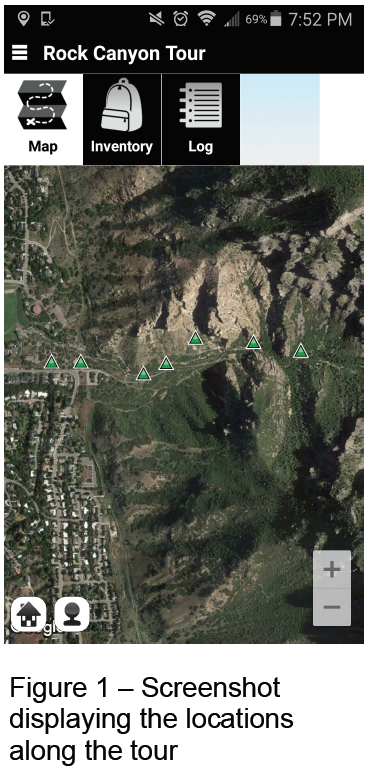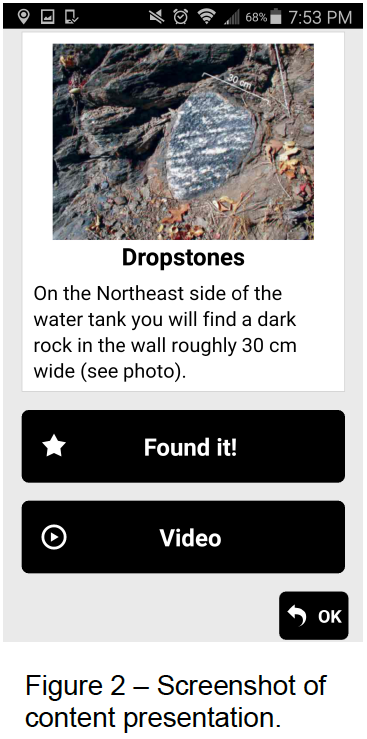Kyle Clements and Peter Rich, Instructional Psychology and Technology
Introduction
The rise of smartphone and tablet devices has increased the availability of GPSenabled technology for learning activities to students. For the first time ever, these devices have also combined GPS technology with powerful handheld computers. Despite widespread use of these devices, little has been done to implement this technology into education (Wallace, 2009; Christie, 2007). For the past several years, students enrolled in Physical Science at Brigham Young University have had the opportunity to explore Provo’s Rock Canyon on a guided tour. The goal of this project was to create a GPS enabled version of this tour and receive student feedback regarding the use of this technology.
Methodology
The Rock Canyon Mobile Tour was created using Tale Blazer. Tale Blazer is a free resource developed by the MIT Scheller Teacher Education Program and is available on both iOS and Android. Students were invited to participate in the tour through inclass announcements. Additional instructions were made available for those desiring to participate regarding how to download the Tale Blazer app and access the tour. Participants were allowed to complete the tour anytime within a two and a half week period. Throughout the tour, students visited eight different waypoints to learn basic geological concepts (Figure 1). As students arrived at each location, instructional content is presented on their device such as videos, images and text (Figure 2). After completing the tour, students were invited to complete an optional survey to provide feedback regarding their experience.
Results
The Rock Canyon Mobile Tour was downloaded 45 times during the course of the study. The average time for completing the tour was 30-45 minutes. Students indicated this was the same amount of time they would expect to spend on a guided tour to the same locations. Students generally reported the tour had a positive impact on their hiking experience and their favorite part was being outdoors. The greatest difficulty students encountered involved difficulties starting the tour at the trailhead.
Discussion
The results indicate that students perceive completing a GPS enabled tour for an assignment as equal or better than attending a guided tour for the same assignment. The Rock Canyon Mobile Tour allowed students to work at their own pace, view video content, and visit the canyon at times convenient for them. Teachers also reported that positive aspects of using the smartphone tour will be fewer guided tours required, and a greater number of students will be able to complete the assignment.
Conclusion
According to students, GPS enabled tours provide an experience that is equal to or better than a guided tour as an assignment. However, special care should be taken to ensure that students can successfully access and start the tour themselves. Future research should assess whether the academic outcomes of GPS enabled tours are comparable to that of guided tours when learning Geology.


